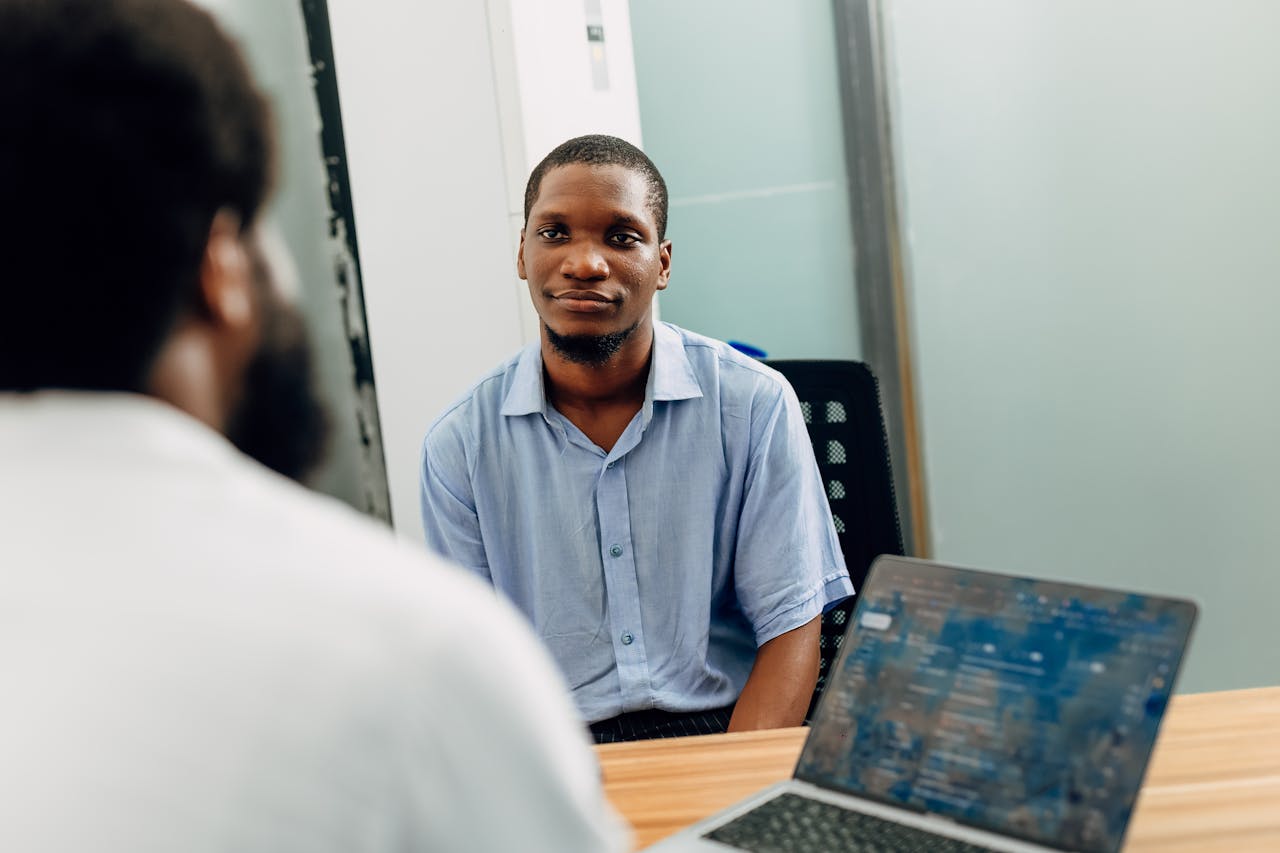The Algorithmic Classroom: AI, Opportunity, and the Future of African Education
The rhythmic chanting of multiplication tables used to echo through the dusty corridors of Mr. Adebayo’s classroom in Lagos. He’d spent decades honing his craft, shaping young minds with the tools he knew best: the chalkboard, textbooks, and the power of his own voice. But a new force was entering the educational landscape, a force that whispered promises of personalization and efficiency – Artificial Intelligence. For Mr. Adebayo, and for many teachers across the continent, the arrival of AI in education sparked a mixture of curiosity and apprehension. Would these algorithms replace human teachers? Would learning become a cold, impersonal affair? The fear isn’t unfounded. We live in an era where robots are handling complex tasks, and AI is rapidly evolving. The World Economic Forum estimates that AI will displace 85 million jobs globally by 2025. It’s understandable why some might worry that teachers could be next. But the reality, especially in the context of African education, is far more nuanced and promising than a dystopian view of robotic teachers replacing humans. Instead of viewing AI as a threat, we should look at it as a powerful tool – an educational assistant that can help us overcome persistent challenges and usher in a new era of personalized and effective learning. Across Africa, the educational landscape is characterized by significant hurdles. UNESCO reports that Sub-Saharan Africa faces the greatest shortage of teachers globally, with an estimated 17 million more teachers needed by 2030 to achieve universal primary and secondary education. The existing teachers are often stretched thin, managing overcrowded classrooms and struggling to provide individualized attention to each student. Furthermore, resources are often scarce, with many schools lacking access to up-to-date materials and technology. This is where AI can play a transformative role. Imagine a student like Fatima in a rural Tanzanian village. She struggles with mathematics but is shy to ask questions in class. An AI-powered learning platform can provide her with personalized exercises tailored to her specific needs, offering real-time feedback and adaptive learning paths that adjust to her progress. It acts like a patient tutor, available 24/7, ensuring she masters every concept before moving on. This is not to replace her teacher but to empower her to learn more effectively. AI-driven tools can also automate routine tasks that consume teachers’ time, freeing them to focus on what they do best: building relationships with students, fostering creativity, and nurturing critical thinking. Grading quizzes, providing personalized feedback, and tracking student progress can be streamlined by AI, allowing teachers to become facilitators of learning rather than mere disseminators of information. According to a report by McKinsey, teachers spend an average of 11 hours per week on administrative tasks, time that could be better spent on instruction and student support. AI can be the solution to this problem, optimizing workload for teachers. Moreover, AI can help personalize learning at scale. In many classrooms across the continent, there is a wide range of student learning levels. One size does not fit all. AI can help create customized learning experiences for each student, addressing their individual needs and pace. This means that advanced learners are not held back and struggling learners are not left behind. AI-powered tools can adapt to each student’s unique learning style, providing targeted support and challenges. The fear that AI will make learning boring is also based on a misunderstanding of how AI is used in education. It is not about replacing the dynamism of a classroom, but about making learning more engaging and relevant. AI can facilitate interactive simulations, virtual reality experiences, and gamified learning environments that motivate students to learn. It can also connect students with a world of information and resources, breaking the barriers of geographical limitations. However, the true power of AI in education isn’t about rote learning and algorithms spitting out answers. The true opportunity lies in fostering higher-order thinking skills that are increasingly important in the age of AI. With AI handling much of the routine tasks, the future of education will focus on problem-solving, critical thinking, and creativity. Collaborative learning and debate will become crucial presentation skills. This means students will engage in active discussions, learn to analyze information from various sources, and work collaboratively to address real-world challenges. In many ways, AI will not replace teachers, but will transform their roles into mentors and guides, helping students navigate the complexities of the modern world. The real fear should not be that AI will replace human educators, but that we will fail to leverage its potential. Failure to embrace these tools may mean that students are not adequately prepared for the demands of the 21st-century workforce. As a report by the African Development Bank suggests, the continent needs a workforce equipped with digital skills, not just to fill today’s jobs, but to innovate and lead in a technologically driven future. It is not enough to be afraid of what we don’t understand, but to take the time to learn how to leverage these tools for human good and progress. The algorithmic classroom is not a threat, but an invitation to reimagine education, making it more personalized, engaging, and effective. The future of African education is not about replacing human teachers with machines, but about creating a symbiotic relationship where technology empowers both teachers and students, creating the leaders and innovators of tomorrow. With this understanding, we can move from fear to excitement, and make the educational dreams of students like Fatima and many more, a reality. I am Faith Nwaobia, a Workforce and Human Capital Development Specialist. I write about Youth Development, the Future of Education, and the Future of Work!
Beyond the Chalkboard: How Digital Transformation is Rewriting the Story of African Education
Aisha’s story began in a small village nestled in the heart of rural Nigeria. Her school, a single room with a leaky roof and tattered textbooks, was a world away from the gleaming, technology-infused classrooms that she saw in her dreams. The blackboard, a familiar friend, was often blank, lacking the chalk to write. For Aisha and countless other children across Africa, the dream of a quality education seemed a distant mirage, shimmering just beyond their reach. But the winds of change, powered by the hum of digital technology, were beginning to blow, carrying whispers of transformation to even the most remote corners of the continent. The digital revolution, long a reality in other parts of the world, was finally starting to make its mark on the African educational landscape, offering a promise of learning that was no longer limited by geography or resource scarcity. For years, the narrative of African education has been plagued by challenges. UNESCO estimates that over 26 million children and adolescents in Sub-Saharan Africa are out of school, and those who are fortunate enough to be in the classroom often face overcrowded conditions and inadequate learning resources. The teacher-student ratio is often skewed, with many instructors struggling to manage large classes, limiting individualized attention. According to the World Bank, only about 40% of students in the region complete secondary education, highlighting a critical drop-off point where opportunities for further learning and employment begin to dwindle. The traditional approach, often reliant on rote memorization and standardized testing, has not always fostered the critical thinking, problem-solving, and creativity so crucial in the 21st century. But digital technologies offer a pathway to revolutionize the system. Imagine Aisha’s village, now equipped with a solar-powered digital learning center. Instead of outdated textbooks, tablets become portals to vast libraries of knowledge and interactive learning platforms. The teacher, once burdened by the limitations of the classroom, can now access a wealth of resources and personalized learning tools. Aisha, and others in the village can now connect with learners from across the globe, participate in virtual discussions, and learn at their own pace. This isn’t science fiction; it’s the real potential of digital transformation. The benefits of integrating digital technologies are numerous. Online learning platforms can bridge geographical gaps, making education accessible to children in remote areas and in marginalized communities. E-learning resources, including videos, simulations, and gamified learning tools can make learning more engaging and interactive, fostering a deeper understanding of concepts. Data analytics can help teachers monitor student progress, identify areas of difficulty, and provide targeted interventions. Moreover, digital literacy skills – a crucial requirement for today’s workforce – can be imparted as part of the regular curriculum. Consider the impact of mobile learning, particularly in Africa where mobile penetration is high. According to GSMA, by 2025, there will be over 600 million unique mobile subscribers across Sub-Saharan Africa. Smartphones can serve as powerful learning tools, offering access to educational apps, online courses, and digital libraries. They can transform long commutes into study sessions, bridging the gap between the school and the home and empowering individual learners. Furthermore, the integration of AI-powered educational tools can personalize the learning experience, adapting to the unique needs and learning styles of each student, ensuring that no one is left behind. However, digital transformation is not without its challenges. The digital divide, characterized by unequal access to technology and internet connectivity, remains a significant hurdle, particularly in rural and impoverished communities. Affordability of devices and internet data costs also remains a barrier. There is also the challenge of integrating these technologies seamlessly into existing educational structures and ensuring that teachers are well-trained to utilize these tools effectively. Content localization, ensuring that digital resources are available in local languages, is also key for a wide-reaching and impactful digital transformation journey. These challenges however, are not insurmountable. Governments can invest in infrastructure, such as expanding broadband access and providing affordable devices to schools. The private sector can collaborate with educational institutions to develop relevant and engaging e-learning content and educational technology solutions that are tailored to the unique needs of the African context. The most crucial element however, is investing in training educators with digital literacy skills and new pedagogical approaches that leverage the power of technology for effective learning delivery. The transition to a digitally empowered education system isn’t simply about technology; it’s about empowering a generation of students to become critical thinkers, problem-solvers, innovators, and ultimately, agents of change in their communities. It’s about creating an inclusive learning environment where every child, regardless of their background or location, has access to quality education. It’s not just about closing the gap in literacy, but also about bridging the skills gap that is often cited as a barrier to economic prosperity in Africa. The digital age demands a workforce that is skilled in digital technologies, and that starts in the classrooms. The story of African education is not a chapter of despair, but one of hope and possibility. The digital transformation is an ongoing revolution, slowly reshaping the landscape of learning and making it possible for Aisha, and millions of young Africans like her, to realize their full potential. It is not merely about adding technology to existing classrooms, but about transforming the entire educational paradigm, from curriculum design to pedagogy, ensuring that every student can thrive in the digital age. The dusty classrooms of the past are slowly being replaced by interactive learning environments, the blackboard by the screen. It is a change long overdue and one that the continent must seize with both hands. The shift has started, and the future of African education is, unequivocally, digital. I am Faith Nwaobia, a Workforce and Human Capital Development Specialist. I write about Youth Development, the Future of Education, and the Future of Work!
The Dusty Road and the Reskilling Oasis: Navigating Africa’s Shifting Job Landscape
The Harmattan wind whipped dust across the faces of the young men gathered under the baobab tree. They were graduates, bright and hopeful just a few years ago. Now, their certificates – hard-earned trophies from the universities – seemed to weigh them down instead of lifting them up. This was the reality in many African communities: degrees aplenty, but jobs, once thought to be a guaranteed reward for education, were proving elusive. This scene wasn’t unique; it was a shared narrative echoing across the continent. According to the African Development Bank, over 13 million young people enter the labor market each year, but only about 3 million find formal employment. We’ve all heard the statistics, and they paint a stark picture: a significant mismatch between the skills being taught and the skills demanded. The old rules, where a university degree was the golden ticket, have been rewritten. Today, it’s not about job security, it’s about skillset security. Think about Kofi in Accra. He graduated with a degree in History, a subject he loved. But the job market, with its ever-increasing tech integration, was demanding digital skills, data analysis, and creative problem-solving – competencies that his history degree, however valuable, didn’t equip him with. Kofi’s story, and countless others, highlights the chasm between traditional education and modern workplace needs. The culprit isn’t the desire to learn, but the curriculum that has sometimes failed to keep pace with the relentless march of technology. The World Bank estimates that automation and artificial intelligence could displace millions of jobs in Africa over the next decade. This isn’t a time for despair, but an urgent call to adapt and transform. It’s time to move beyond classrooms that teach theory in isolation and embrace learning environments where hands-on practical experience is central. This means investing in vocational training programs, promoting apprenticeships, and creating opportunities for individuals to gain those in-demand skills – coding, digital marketing, renewable energy technology, and advanced agricultural techniques, to name a few. The solution isn’t just about acquiring new skills; it’s about changing our mindset. In the past, education was seen as a one-way ticket to a lifelong career. Now, we need to view it as a continuous journey – a process of lifelong learning and upskilling. This shift is supported by several labor market theories. The Human Capital Theory, for example, emphasizes that individuals increase their productivity and earning potential through investments in skills and knowledge. In this context, continuous reskilling becomes essential to remain competitive and relevant in an evolving labor market. Further, the Signaling Theory suggests that acquiring new skills acts as a signal to employers, highlighting an individual’s willingness to adapt and learn. By investing in relevant practical training, individuals demonstrate their commitment to professional growth, making them more attractive to prospective employers in a competitive job landscape. This is no longer an era of passive job seeking, but active skills acquisition and strategic repositioning in the market. This isn’t a story of doom and gloom, but a tale of opportunity. The African continent is brimming with talent and potential. When we empower individuals with the right skills – skills that are grounded in practice and real-world application – we unlock that potential. This means creating accessible and affordable training programs, encouraging collaboration between educational institutions and industries, and fostering a culture that celebrates lifelong learning. It’s not enough to wait for opportunities; we must actively create them, build them, and then continually upgrade ourselves to remain valuable contributors in the ever-changing world of work. The desert can bloom, and those dusty roads can lead to an oasis of opportunities, not through mere hope, but through pragmatic action and continuous learning. The shift has already begun, and those willing to embark on the reskilling journey will be the true beneficiaries of the changing job market in Africa. I am Faith Nwaobia, a Workforce and Human Capital Development Specialist. I write about Youth Development, Future of Education, and the Future of Work!
From Classroom to Career: How Utidia’s AIM Model is Bridging the Gap Between Theory and Practice
The graduation ceremony had ended, the air thick with the scent of hope and accomplishment. I stood there, clutching my degree – a symbol of years of hard work, late nights, and countless textbooks. I, Faith Nwaobia, was ready to take on the world, a freshly minted graduate with a solid academic record. What I didn’t realize then was that my journey was just beginning, and that the landscape outside the hallowed walls of academia was very different from the one I had anticipated. The truth, I soon discovered, was that I was equipped with knowledge but lacked the practical skills that the job market demanded. For the next six years, I navigated the frustrating maze of job hunting. Rejection letters became my constant companions, interviews often ending with the same feedback: “You have a strong theoretical foundation, but you lack practical experience.” It was a painful realization – that the formal education system had not fully prepared me for the demands of the working world. That was a time I could not easily forget. It became my personal call to action – a burning desire to understand why so many bright graduates were struggling to find meaningful employment, and what we could do to bridge the gap. My personal struggle became the seed for my research, which focused on the impact of practical-based training models on skills gaps. This research illuminated the crucial need for a system that connected theory with hands-on application. It was during this research that the AIM Model – Apprenticeship, Internship, and Mentorship – was developed. We wanted to create a training program that equips learners with the practical competencies they need to succeed in the modern workforce, so that the many graduates out there will not experience what I did. At Utidia, our mission is to ensure that no other graduate spends six years like I did, just trying to get a job. The Utidia AIM model is more than just a training program; it is a transformative journey that combines hands-on experience with personalized mentorship, providing learners with a holistic pathway to career success. It’s a system designed to translate theoretical concepts into practical skills that are in high demand by employers. It’s about ensuring that graduates are not just book-smart, but also job-ready and equipped to thrive in their chosen fields. The impact of this model is best seen through the stories of those who have benefited from it. Take Uchechi, for example, a young graduate from Nigeria. Before joining the Utidia AIM program, Uchechi struggled to find her footing in the competitive job market. However, through the digital marketing apprenticeship, she didn’t just learn the theoretical aspects of digital marketing; she immersed herself in practical projects, working on real campaigns and learning from seasoned professionals. Today, Uchechi is a master in Digital Marketing in Nigeria, leading a team and driving impactful results for various businesses. Her trajectory is a powerful example of what practical training can achieve. Then there’s Edel from Kenya. After completing her university degree, she had a deep interest in human resources, but her confidence was low due to the lack of practical experience. The Utidia AIM program offered her an internship opportunity in a leading HR firm coupled with a personal mentor. She learned firsthand about HR strategies and talent management, gaining practical experience and confidence in the process. Today, Edel is not just working in HR; she is a master in HR, shaping talent acquisition strategies for a growing organization in Kenya. Abraham from Liberia, with a creative passion, was eager to break into the world of graphic design and video editing. The AIM mentorship program provided him with personalized guidance from industry experts, helping him hone his skills and build a strong portfolio. He now works as a graphic designer and video editor, with a growing client base. His story is a testament to the fact that with the right training and support, any passion can be turned into a successful career. And who can forget Ukachukwu? His journey with the Utidia AIM program in project management equipped him with the necessary skills and confidence needed to secure a position at Meta. Ukachukwu’s story shows that when passion is paired with practical training and mentorship, even a dream as big as working for an international tech giant can be achieved. Ukachukwu’s success serves as an inspiration to many other young people in the Utidia program. These are just a few of the countless stories of transformation that have emerged from the Utidia AIM program. In both Nigeria and other African countries, Utidia’s AIM model has been a driving force in transforming many lives. We have countless individuals who have moved from the frustration of joblessness to the fulfillment of meaningful careers through our training programs. These are young people who not only acquired skills but also gained confidence, industry connections, and the ability to navigate the complexities of the modern workplace. The AIM model is not just about skills; it’s about cultivating a mindset of continuous learning, innovation, and collaboration. It’s about empowering African youth to take ownership of their careers and contribute meaningfully to their communities and the global economy. At Utidia, we believe that practical experience is not just an added bonus; it is an essential requirement for success. Our AIM model is a testament to our commitment to bridging the gap between theory and practice, so that every young person can transition seamlessly from the classroom to a fulfilling career and impact our continent. As a model which began as a passionate response to a glaring gap in our education system, has now, five years later since 2020, blossomed into the Utidia Apprenticeship Institute. This full-fledged institute is where we continue to hone and utilize this winning training model, grooming the next generation of African leaders and a highly skilled workforce. The Utidia Apprenticeship Institute represents our commitment to continuous improvement, expansion, and a dedicated focus on practical, career-focused learning. We



